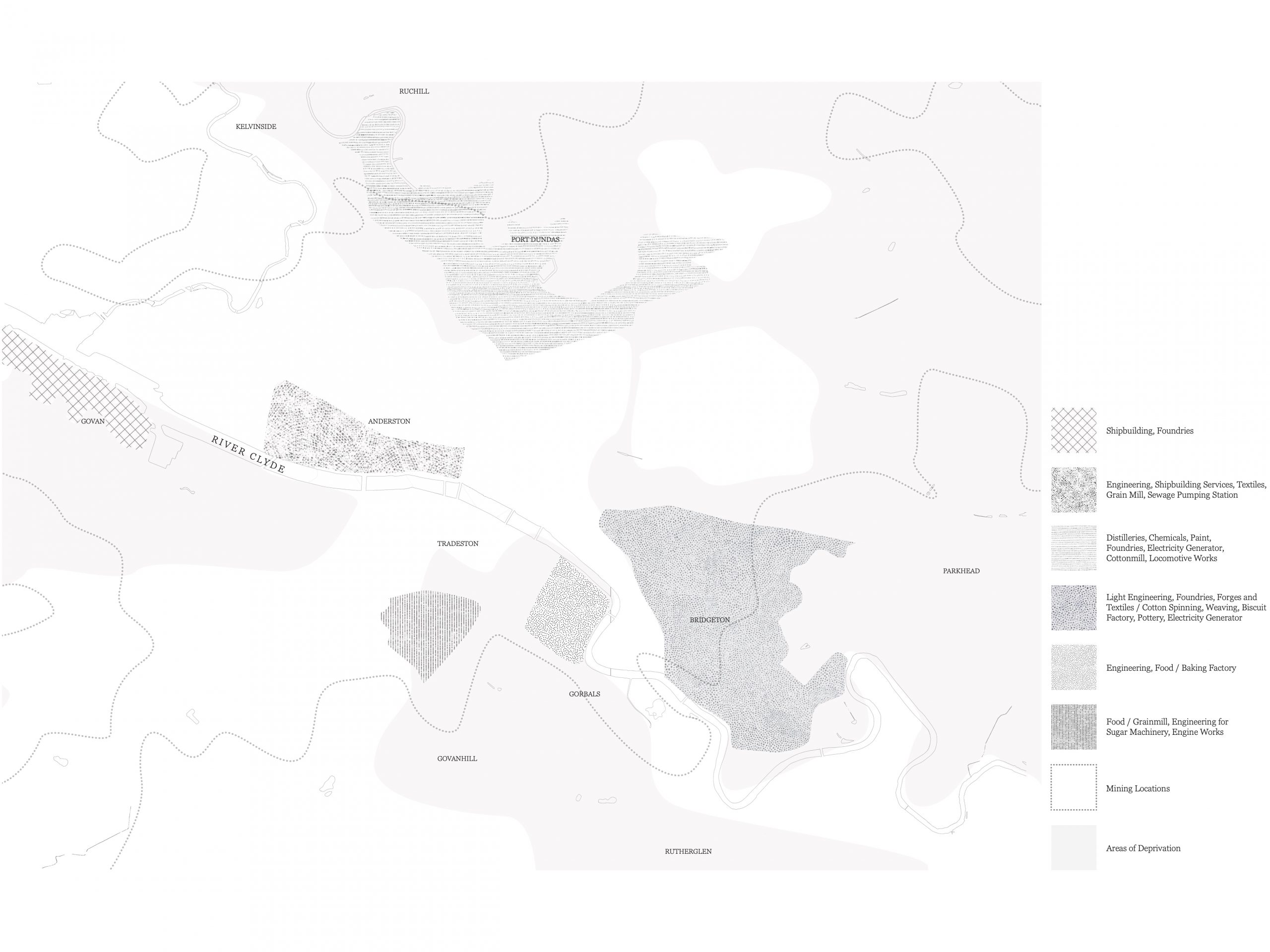Glasgow’s industrial cores remained at the north, east and south extremities, dissipating towards the edges of the more affluent region of the west, following along the River Clyde and using it as a source of transportation and power. Emphasis is given to these forgotten industrial centers by leaving the city centre we recognize today, blank.
Many of these former thriving districts have now been left as relics of the past: vast expanses of derelict land, once enjoyed a sense of purpose, now lie vacant with little remaining of their historic identity. Buildings slowly decayed around them and were finally demolished. The livelihoods of many, originally displaced, people were gone and never replaced, leaving inherited generational traumas that are explicit in the levels of deprivation today, which, to no one’s surprise, are most prevalent in these post-industrial centers. It is easy to forget that these unique districts formed their own communities and their own individuality that had deep-rooted ties to its labour.
Glasgow has embedded in its fibers a culture of labour, knowledge and creativity, spreading beyond the boundaries of the city. A rich and varied collection of industries took place, with each district honing its own character and area of expertise – from textiles, distilleries and of course, shipbuilding. Beneath the city lay rich seams of coal and iron ore, which certainly did not go unnoticed, becoming the catalyst of the Industrial Revolution.
Key Themes: Environmental, Land-use, Industry

